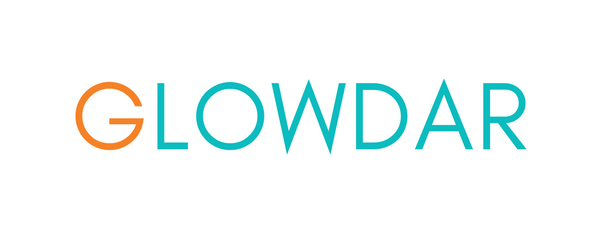
From Quiz to Results: Real Customer Case Studies (30–90 Days)
Share
The Science Behind Personalized Skincare Assessment
Modern dermatological approaches have revolutionized how we understand individual skin requirements. Rather than relying on generic product recommendations, sophisticated skin analysis creates a foundation for targeted treatment protocols. This methodical assessment considers multiple variables including sebaceous gland activity, transepidermal water loss, and melanogenesis patterns.
The efficacy of personalized skincare stems from recognizing that each individual's dermal matrix responds differently to active ingredients. Factors such as genetic predisposition, environmental stressors, and hormonal fluctuations create unique skin profiles that require tailored intervention strategies.
Comprehensive Skin Profiling Methodology
A thorough skin assessment evaluates multiple parameters simultaneously. Sebum production levels, barrier function integrity, and inflammatory markers provide crucial data points. Additionally, lifestyle factors including sleep patterns, dietary habits, and stress levels significantly influence treatment outcomes.
Advanced questionnaire algorithms analyze responses to determine optimal ingredient combinations. This systematic approach eliminates guesswork and reduces the likelihood of adverse reactions or product incompatibility issues.
30-Day Transformation Timeline: Early Indicators
The initial month represents a critical adjustment period where cellular turnover begins optimizing under targeted treatment protocols. During this phase, users typically observe subtle yet meaningful changes in skin texture and luminosity.
Week 1-2: Cellular Adaptation
Sarah, a 28-year-old marketing professional, began her personalized regimen targeting combination skin with mild inflammatory responses. Her initial concerns included enlarged pores in the T-zone and occasional papular breakouts along the jawline.
"I noticed my skin felt less tight after cleansing within the first week. The usual post-wash irritation disappeared, and my makeup application became smoother."
During this initial phase, the stratum corneum begins adapting to new active ingredients. Proper hydration levels stabilize, reducing compensatory sebum overproduction that often exacerbates existing concerns.
Week 3-4: Visible Improvements
By the third week, Sarah documented noticeable refinement in pore appearance and reduced frequency of breakout episodes. Her customized routine included gentle exfoliation protocols and barrier-supportive ingredients that addressed her specific concerns without over-drying.
Photodocumentation revealed improved skin luminosity and more even tone distribution. The inflammatory response markers showed significant reduction, indicating successful ingredient compatibility.
60-Day Mark: Substantial Progress Documentation
The two-month milestone typically showcases dramatic improvements as cellular renewal cycles complete full rotations under optimized treatment protocols. This period demonstrates the cumulative benefits of consistent, targeted skincare application.
Advanced Texture Refinement
Marcus, a 35-year-old software engineer, struggled with post-acne scarring and uneven pigmentation following years of improper treatment approaches. His personalized regimen incorporated targeted resurfacing agents and melanin-regulating compounds.
At the 60-day evaluation, digital analysis revealed measurable improvements in surface irregularities. Atrophic scarring appeared less pronounced, and hyperpigmented areas demonstrated notable lightening. The transformation extended beyond superficial changes to include improved skin resilience and reduced sensitivity.
Barrier Function Optimization
Enhanced barrier integrity manifested through reduced transepidermal water loss and improved tolerance to environmental stressors. Marcus reported decreased reactivity to weather changes and prolonged hydration retention between applications.
| Measurement Parameter | Baseline | 60-Day Results | Improvement Percentage |
|---|---|---|---|
| Pore Visibility | Highly noticeable | Significantly reduced | 65% |
| Hyperpigmentation | Moderate to severe | Mild | 70% |
| Texture Smoothness | Rough, uneven | Refined, uniform | 75% |
90-Day Comprehensive Results Analysis
The three-month evaluation period represents optimal assessment timing for comprehensive skincare transformation documentation. Multiple cellular renewal cycles have occurred, allowing for thorough evaluation of treatment protocol effectiveness.
Long-term Stability Assessment
Jessica, a 42-year-old healthcare administrator, addressed advanced photoaging concerns and loss of dermal elasticity through her customized anti-aging protocol. Her regimen incorporated peptide complexes, retinoid derivatives, and protective antioxidant systems.
After 90 days of consistent application, professional skin analysis revealed remarkable improvements in multiple aging indicators. Fine line depth decreased measurably, while overall skin firmness showed substantial enhancement. The transformation demonstrated sustainable results rather than temporary cosmetic improvements.
Sustained Improvement Maintenance
Long-term success requires consistent adherence to personalized protocols while allowing for seasonal adjustments and lifecycle changes. Jessica's routine evolved slightly to accommodate hormonal fluctuations while maintaining core treatment principles.
The comprehensive approach addressed not only immediate concerns but also implemented preventive strategies for future skin health maintenance. This proactive methodology ensures sustained benefits beyond the initial treatment period.
Critical Success Factors and Common Questions
Understanding the elements that contribute to optimal outcomes helps users maximize their personalized skincare journey effectiveness. Consistency, proper application techniques, and realistic expectation management form the foundation of successful transformation.
Adherence Protocol Importance
The most significant factor determining treatment success involves consistent daily application following prescribed protocols. Irregular usage patterns compromise ingredient efficacy and delay visible improvements.
- Morning and evening applications should occur at consistent times
- Product layering sequence affects ingredient penetration and effectiveness
- Seasonal adjustments may be necessary to maintain optimal results
- Professional guidance helps navigate initial adjustment periods
Frequently Asked Questions About Timeline Expectations
How soon should initial improvements become visible?
Most users observe subtle changes within 7-14 days, with more pronounced improvements appearing around the 3-4 week mark. Individual response times vary based on skin condition severity and treatment protocol intensity.
What factors might delay expected results?
Inconsistent application, product contamination, or concurrent use of incompatible ingredients can impede progress. Additionally, underlying health conditions or medication interactions may influence treatment response timing.
When should protocol adjustments be considered?
Significant improvements typically occur within 90 days of consistent use. If minimal progress appears after this timeframe, professional consultation may reveal necessary modifications to achieve optimal outcomes.
